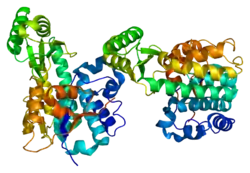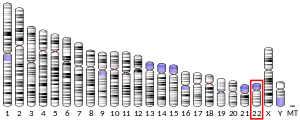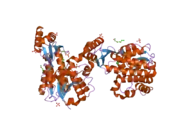| MCAT | |||||||||||||||||||||||||||||||||||||||||||||||||||
|---|---|---|---|---|---|---|---|---|---|---|---|---|---|---|---|---|---|---|---|---|---|---|---|---|---|---|---|---|---|---|---|---|---|---|---|---|---|---|---|---|---|---|---|---|---|---|---|---|---|---|---|
 | |||||||||||||||||||||||||||||||||||||||||||||||||||
| |||||||||||||||||||||||||||||||||||||||||||||||||||
| Identifiers | |||||||||||||||||||||||||||||||||||||||||||||||||||
| Aliases | MCAT, FASN2C, MCT, MT, NET62, fabD, malonyl-CoA-acyl carrier protein transacylase, MCT1 | ||||||||||||||||||||||||||||||||||||||||||||||||||
| External IDs | OMIM: 614479 MGI: 2388651 HomoloGene: 15511 GeneCards: MCAT | ||||||||||||||||||||||||||||||||||||||||||||||||||
| |||||||||||||||||||||||||||||||||||||||||||||||||||
| |||||||||||||||||||||||||||||||||||||||||||||||||||
| |||||||||||||||||||||||||||||||||||||||||||||||||||
| |||||||||||||||||||||||||||||||||||||||||||||||||||
| |||||||||||||||||||||||||||||||||||||||||||||||||||
| Wikidata | |||||||||||||||||||||||||||||||||||||||||||||||||||
| |||||||||||||||||||||||||||||||||||||||||||||||||||
Malonyl CoA-acyl carrier protein transacylase, mitochondrial is an enzyme that in humans is encoded by the MCAT gene.[5][6]
Function
The protein encoded by this gene is found exclusively in the mitochondrion, where it catalyzes the transfer of a malonyl group from malonyl-CoA to the mitochondrial acyl carrier protein. The encoded protein may be part of a fatty acid synthase complex that is more like the type II prokaryotic and plastid complexes rather than the type I human cytosolic complex. Two transcript variants encoding different isoforms have been found for this gene.[6]
Clinical significance
The enzyme encoded by the MCAT gene, along with other enzymes that regulate Malonyl-CoA concentration, have been shown to regulate levels such that malonyl-CoA concentration decreases in human muscle tissue when under exercise training. This enzyme specifically has increased activity under these conditions, as it is known to catabolize malonyl-CoA. [7]
Interactions
The human Malonyl CoA-acel carrier protein transacylase in human mitochondria associates with respiratory complex one, such that it interacts functionally with a mitochondrial malonyltransferase. Both species are encoded by nuclear genes, and their translocation into mitochondria is dependent on the presence of an N-terminal targeting sequence.[5]
References
- 1 2 3 GRCh38: Ensembl release 89: ENSG00000100294 - Ensembl, May 2017
- 1 2 3 GRCm38: Ensembl release 89: ENSMUSG00000048755 - Ensembl, May 2017
- ↑ "Human PubMed Reference:". National Center for Biotechnology Information, U.S. National Library of Medicine.
- ↑ "Mouse PubMed Reference:". National Center for Biotechnology Information, U.S. National Library of Medicine.
- 1 2 Zhang L, Joshi AK, Smith S (Oct 2003). "Cloning, expression, characterization, and interaction of two components of a human mitochondrial fatty acid synthase. Malonyltransferase and acyl carrier protein". The Journal of Biological Chemistry. 278 (41): 40067–74. doi:10.1074/jbc.M306121200. PMID 12882974.
- 1 2 "Entrez Gene: MCAT malonyl CoA:ACP acyltransferase (mitochondrial)".
- ↑ Kuhl JE, Ruderman NB, Musi N, Goodyear LJ, Patti ME, Crunkhorn S, Dronamraju D, Thorell A, Nygren J, Ljungkvist O, Degerblad M, Stahle A, Brismar TB, Andersen KL, Saha AK, Efendic S, Bavenholm PN (Jun 2006). "Exercise training decreases the concentration of malonyl-CoA and increases the expression and activity of malonyl-CoA decarboxylase in human muscle". American Journal of Physiology. Endocrinology and Metabolism. 290 (6): E1296-303. doi:10.1152/ajpendo.00341.2005. PMID 16434556.
Further reading
- Ma J, Dempsey AA, Stamatiou D, Marshall KW, Liew CC (Mar 2007). "Identifying leukocyte gene expression patterns associated with plasma lipid levels in human subjects". Atherosclerosis. 191 (1): 63–72. doi:10.1016/j.atherosclerosis.2006.05.032. PMID 16806233.
- Kuhl JE, Ruderman NB, Musi N, Goodyear LJ, Patti ME, Crunkhorn S, Dronamraju D, Thorell A, Nygren J, Ljungkvist O, Degerblad M, Stahle A, Brismar TB, Andersen KL, Saha AK, Efendic S, Bavenholm PN (Jun 2006). "Exercise training decreases the concentration of malonyl-CoA and increases the expression and activity of malonyl-CoA decarboxylase in human muscle". American Journal of Physiology. Endocrinology and Metabolism. 290 (6): E1296–303. doi:10.1152/ajpendo.00341.2005. PMID 16434556.
- Kimura K, Wakamatsu A, Suzuki Y, Ota T, Nishikawa T, Yamashita R, Yamamoto J, Sekine M, Tsuritani K, Wakaguri H, Ishii S, Sugiyama T, Saito K, Isono Y, Irie R, Kushida N, Yoneyama T, Otsuka R, Kanda K, Yokoi T, Kondo H, Wagatsuma M, Murakawa K, Ishida S, Ishibashi T, Takahashi-Fujii A, Tanase T, Nagai K, Kikuchi H, Nakai K, Isogai T, Sugano S (Jan 2006). "Diversification of transcriptional modulation: large-scale identification and characterization of putative alternative promoters of human genes". Genome Research. 16 (1): 55–65. doi:10.1101/gr.4039406. PMC 1356129. PMID 16344560.
- Collins JE, Goward ME, Cole CG, Smink LJ, Huckle EJ, Knowles S, Bye JM, Beare DM, Dunham I (Jan 2003). "Reevaluating human gene annotation: a second-generation analysis of chromosome 22". Genome Research. 13 (1): 27–36. doi:10.1101/gr.695703. PMC 430954. PMID 12529303.
- Dunham I, Shimizu N, Roe BA, Chissoe S, Hunt AR, Collins JE, Bruskiewich R, Beare DM, Clamp M, Smink LJ, Ainscough R, Almeida JP, Babbage A, Bagguley C, Bailey J, Barlow K, Bates KN, Beasley O, Bird CP, Blakey S, Bridgeman AM, Buck D, Burgess J, Burrill WD, O'Brien KP (Dec 1999). "The DNA sequence of human chromosome 22". Nature. 402 (6761): 489–95. Bibcode:1999Natur.402..489D. doi:10.1038/990031. PMID 10591208.





